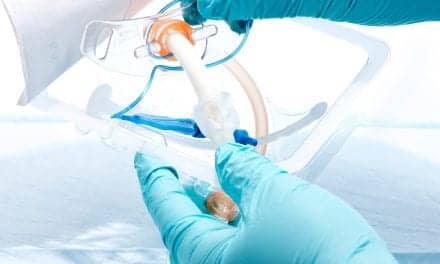In a special event at the 2006 AARC International Congress, MAQUET Critical Care, Bridgewater, NJ, presented the technology of NAVA (neurally adjusted ventilatory assist.), a new approach to mechanical ventilation that lets patients control the ventilators with their respiratory center in the brain. According to MAQUET, NAVA represents a paradigm shift in the area of ventilation therapy.
The NAVA approach to mechanical ventilation is based on the patient’s neural respiratory output. Signals from the respiratory control center in the brain are transmitted through the phrenic nerve to the diaphragm, where a catheter captures the electrical activity (Edi) and feeds it to the ventilator. NAVA responds by providing the requested level of ventilatory support to the patients. As the ventilator and diaphragm work with the same signal, the coupling between the two is nearly instantaneous.
“NAVA is a completely new mode of mechanical ventilation where the ventilator is controlled by the patient’s respiratory center on a breath-by-breath basis," said Christer Sinderby, PhD, St. Michael’s Hospital, Toronto. “In addition to being a distinct mode of ventilation, NAVA also enables a complet4e evaluation of the neural respiratory control thanks to the electrical activity of the brain."
MAQUET began working on NAVA with Sinderby in 2001 and quickly saw its potential for patient benefit:
improved synchrony between patient and ventilator;
avoidance of over or under assistance;
enhanced patient comfort;
Edi signal can be used as a decision support concerning unloading or extubation; Edi signal can be used as a monitoring tool, providing information on respiratory drive, volume requirements, effect of ventilatory setting, and as an indication for sedation and weaning; and in infants,
NAVA, with its Edi signal, is an effective tool for clinicians to interpret often-chaotic breathing patterns.
The NAVA function is available on MAQUET Critical Care SERVO-I ventilators. The only additional equipment is NAVA software, Edi module and an Edi catheter; and current SERVO-I users can upgrade their existing equipment easily.
Disclaimer: A 510(k) application has been submitted to the FDA and is under review. NÅVA is not commercially available in the US.









